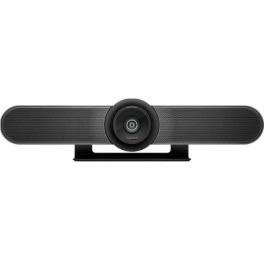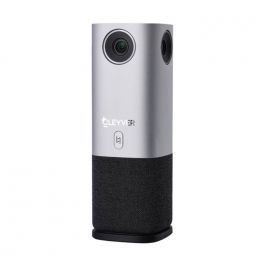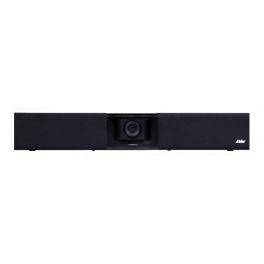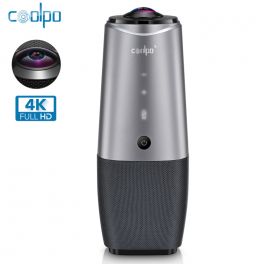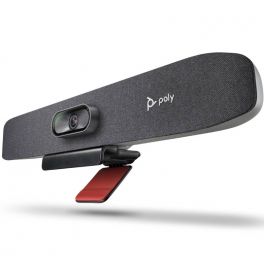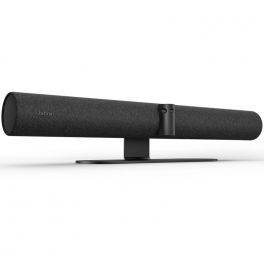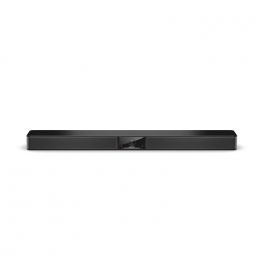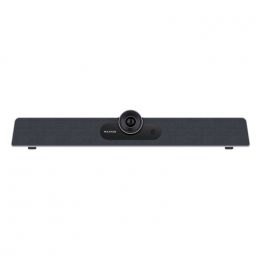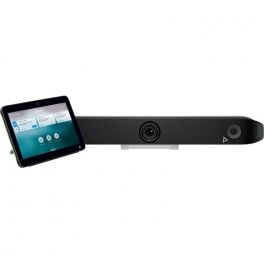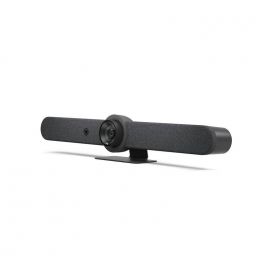
ROOM SIZE
How many screens, cameras, microphones and speakers do you need? Where to place them? These are the questions to ask yourself before purchasing any equipment. Because there is no one-size-fits-all video solution. Each room is unique in size, configuration and layout. That's why it's FUNDAMENTAL to think about the architecture of your video conferencing space based on its future use. The shape of the room, lighting, acoustics and even confidentiality are criteria that come into play when designing a video room. To help you imagine your future collaboration space, we have decided to focus on the criterion we consider crucial: the size of the room!
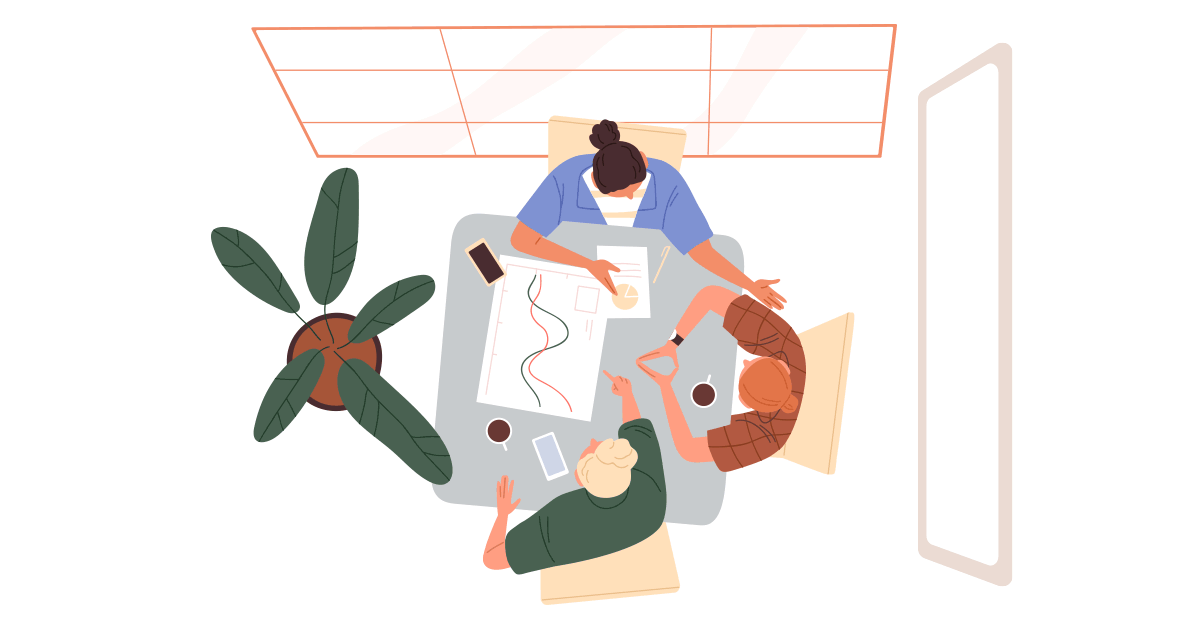
Before going into details about the configuration of each room, it is worth making one, or rather two, quick reminders:
1. Not all rooms are the same size or serve the same purpose
2. The size of the videoconference room must correspond to the expected number of participants. (We recommend keeping at least 1 meter between the back of the seats and the wall, for greater comfort).

Single room
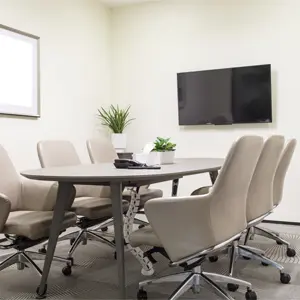
Small room
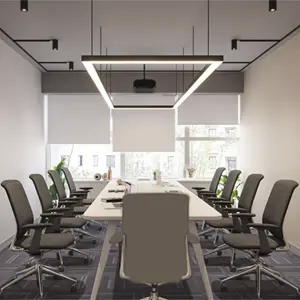
Medium room
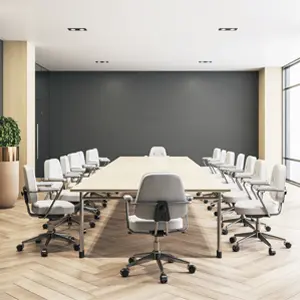
Big room
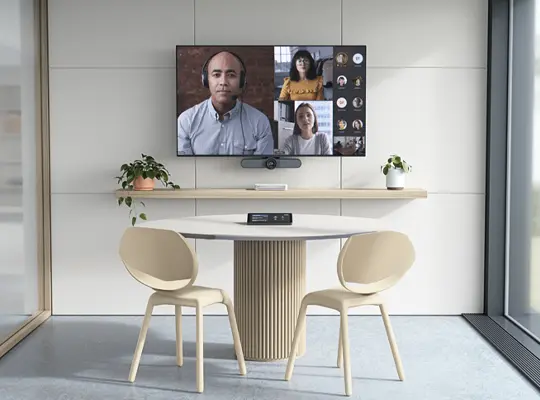
Single room
You've probably already heard the term: Huddle Room. Recently arrived from the United Kingdom, these are mini rooms or individual rooms as we call them in Spain, with capacity for a maximum of 3 people simultaneously. Once underutilized, these spaces are now one of the fastest growing types of meeting rooms. This is for two reasons: employees need extra rooms for impromptu meetings and they don't require a large investment in video solutions.
Characteristics :
- Capacity: between 1 and 3 people
- Use: impromptu work sessions, small group video conferences
- Main advantage: it does not require much space or equipment to install (so it is cheap)

SMALL ROOM
This is the trendy room setup! By 2024, it is estimated that 75% of video conferencing will take place in small rooms. Because? Simply because they offer a more private and informal (almost cozy) space for real-time collaboration. To equip them, opt for a compact solution with instant start-up: in short, a tool that allows teams to share ideas at any time of the day!
Characteristics :
- Capacity: 12 people or more
- Use: executive committees, training courses and professional presentations of all kinds
- Biggest advantage: you can bring EVERYONE together in the same space
OUR KEY PRODUCTS FOR SMALL SPACES
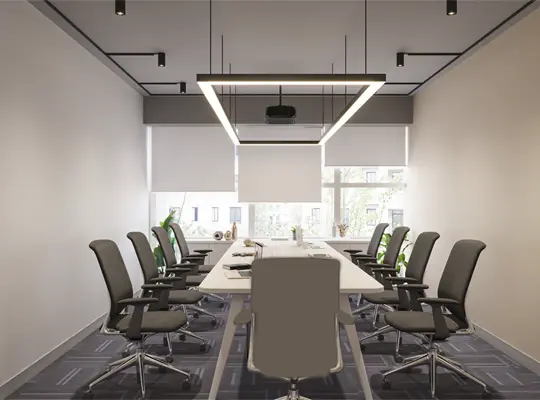
MEDIUM ROOM
Accommodating between 8 and 10 people , these conference or board rooms are very popular with large groups. They are equipped with intelligent participant capture, high-performance microphones and easy operation (for instant collaboration). One caveat: these spaces often require reservations to guarantee availability (good news: we have a page dedicated to this topic right here ).
Characteristics :
- Capacity: up to 12 people
- Use: presentations, team meetings, crisis sessions, etc.
- Biggest advantage: You can choose between different configuration options to equip it
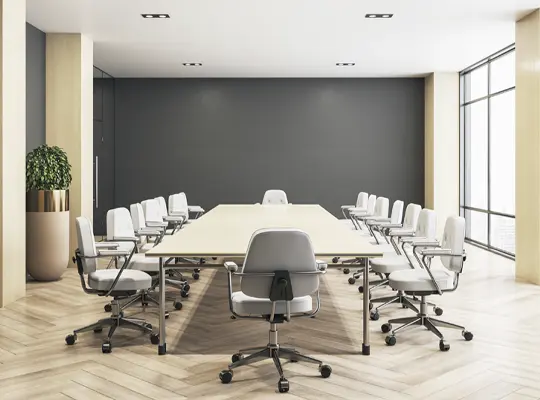
BIG ROOM
Often called "boardrooms", these are spaces larger than 20 m² used for seminars, training courses or team meetings. Here, the emphasis is on high-end modular equipment. But large spaces don't have to involve complex configurations: with the right vision system, you can manage and use large spaces as easily as a small conference room.
Characteristics :
- Capacity: 12 people or more
- Use: executive committees, training courses and professional presentations of all kinds
- Biggest advantage: you can bring EVERYONE together in the same space
OUR SELECTION FOR MEDIUM/LARGE ROOMS
Our recommendation: Call a professional!
Going to a specialist can be scary, especially because of the cost, but it is worth it. Because? It is a waste of money and energy to condition a room that no one is going to use or that is not very ergonomic. On the other hand, turning to a professional is an investment that will be profitable
Next Chapter: Setting up the meeting room according to your budget!
OR



